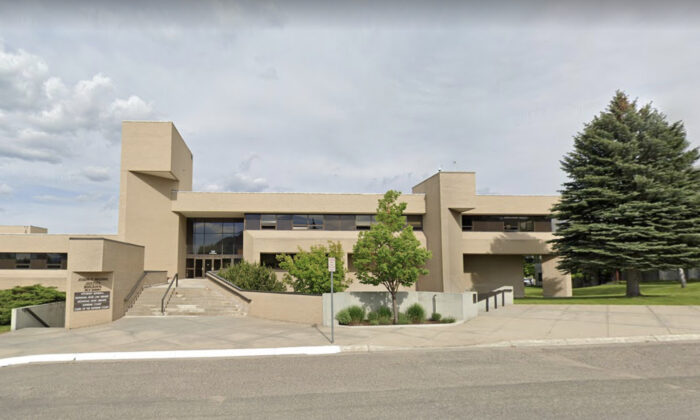
When I decided to write about the two recent national political conventions, my first thoughts turned to 1968 and Norman Mailer. In the summer of 1968, Mailer, the winner of two Pulitzer Prizes and author of numerous best sellers, attended and reported on both conventions. The Republicans were in Miami and, like this year, the Democrats were in Chicago.
Initially on assignment for Harper’s magazine, Mailer’s observations were published as a popular book, “Miami and the Siege of Chicago.” I have read this short account several times, and it always brings back the sense of fear and dread that permeated American politics in 1968. The Vietnam War was raging.

Both Martin Luther King, Jr. and Robert F. Kennedy had just been assassinated.
The Republican convention turned into a coronation for Richard Nixon. The Democrats’ convention in Chicago was a maelstrom of political rage and police brutality. According to Wikipedia, the 1968 Democratic convention was among the most confrontational in American history.
The early political battles within the convention hall concerned the seating of delegates from five Southern states and the party’s platform on the continuing Vietnam War. Three candidates battled for the nomination after the pre-convention issues were resolved. Vice President Hubert Humphrey was endorsed by President Lyndon Johnson and won on the first ballot.
In second place was Eugene McCarthy, the Minnesota senator who called for a disengagement from Vietnam. U.S.
Sen. George McGovern of South Dakota picked up delegates who had supported Robert Kennedy prior to his assassination. Following the convention, the Democratic Party was, like the country, deeply divided and in complete disarray.
The 1968 Democratic convention is most remembered for what took place outside the convention hall on the streets of Chicago. Richard Daley, Chicago’s mayor, refused to accommodate demonstrators from well over 100 antiwar groups. These demonstrators clashed with Chicago police, Army troops, Illinois National Guardsmen, and Secret Service agents over five days.
There were almost 600 arrests, with much of the violence captured on television and shown across the country. One major convention issue significantly changed the rules governing delegate selection. Prior to 1968, white, male party bosses in each state chose the delegates and ignored Democratic voters.
Following this convention, young reformers demanded a move toward primaries where registered Democrats could vote for candidates, and those candidate’s delegates would go to the convention. This year, delegates pledged to President Joe Biden quickly moved to support Vice President Kamala Harris after Biden withdrew from the race in July. Harris had not won a single primary or caucus.
Ironically, there was little debate and no disagreement from the party faithful who viewed the prospect of Donald Trump being president again as the greater threat. Unlike Mailer, I did not have the advantage of attending the recent conventions. My observations are based on watching the events on cable news and from reading filed reports from those who attended.
In contrast to 1968, political conventions are now packaged for television in mind with little uncertainty or drama. Floor fights over candidates or policy positions are nonexistent. Each political party puts on a show of unity, hoping to energize their base and gain the attention of independent voters.
The conventions are scheduled during television “dead zones,” before or after the Olympics, and before the beginning of football season. This year’s Republican convention appeared to focus on grabbing the attention of young white males. It was packed full of entertainers and speakers who presented a masculine, aggressive image, such as Dana White, the head of the Ultimate Fighting Championship (UFC), and Hulk Hogan.
Kid Rock introduced Trump as he took the stage on the last night of the RNC. Trump supporters were pumped up and prepared to march to victory at their convention. All signs were favorable following the failed assassination attempt on Trump in Butler, the dismissal of federal charges in the Florida classified documents case, and Biden’s steep drop in the polls following the June 27 debate.
Few African Americans attended the convention, but several were given the podium to say how Trump would save Black America. When J.D.
Vance was nominated as vice president, he brought a brutal message of his personal evangelical survival to the table. The theme of victimhood permeated the Republican convention. Gov.
Kristi Noem of South Dakota shouted at the assembly, “They’ve attacked his reputation, impeached him, tried to bankrupt him, and unjustly prosecuted him.” The Democratic convention painted a picture of an inclusive America where everyone should have a chance to achieve his or her best. Michelle Obama’s speech was a masterful presentation of the political and moral contrasts that face voters in November.
Observers who have attended numerous conventions reported that the energy level at the Democrats’ gathering was the highest they can remember. Clearly, Harris has brought new Democratic Party enthusiasm to an election with dismal prospects before she was nominated. How does the state of the country today compare with 1968? While this year’s political conventions were more sedate, the nation’s divisions are deeper and more profound.
In 1968, our disagreements focused on foreign policy surrounding Vietnam. As student protesters got older and subsequent administrations left Vietnam, the tensions and disharmony melted away. Conversely, in recent years, America’s divisions have devolved into deeply rooted tribal politics and fundamental questions about the future of democracy.
When President Lyndon Johnson called 1968 “the nightmare year,” our form of government was not under threat domestically. America’s 2024 nightmare has a greater chance of turning into a reality before the country can recover its footing and begin to heal. Gary Stout is a Washington attorney.
.














